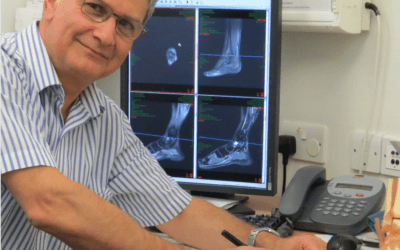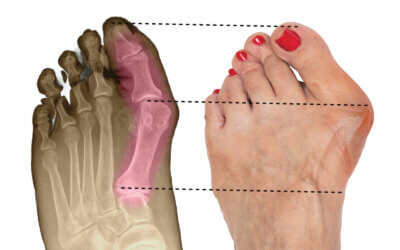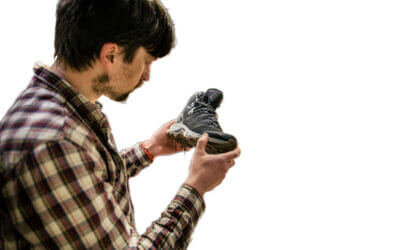How Long Does Bunion Surgery Last?
Fusion is a safer bet than most alternatives and offers better longevity. Third surgeries seldom come without loss of function. More surgery involves deeper tissue scarring, and even then, a joint-sparing operation could lead to limited joint movement. Minimal incisional surgery (MIS) appeals to many for obvious reasons, but the follow-up is not as well presented as other surgeries and is limited to specific criteria. MIS is available and has advantages. New screw systems allow surgical placement through keyholes under X-ray-guided control.
New Bunion Guide for Patients
This new edition is without doubt an extensive tour de force of all thing’s bunion.
David Tollafield wisely teamed up with Dr Tim Kilmartin bringing together two experts with 60 years’ experience of caring for patients and fixing bunions. It’s fair to say few, if any, will have contributed more to the development of podiatric surgery and bunion correction in the UK. And what a result, this book leaves no stone unturned in helping patients understand what a bunion is, how to manage the condition themselves before delving into the surgical options, surgical risks and complications.
Writing From The Past
“At the time [1978] research in chiropody was rather sparse, poorly owing to the lack of a foundation degree. In one paper from a US doctor [DPM], there was extensive material covering bacteria recovered from surgical infections. This left me in awe of their academic standards and only heightened my ambition to become a podiatrist.
Back at Weston Favell clinic, I bumped into April Reilly, the sister who ran the GP’s clinic. ‘I see you’ve got your own autoclave now. You won’t be needing mine anymore is that right? She said in jest.
I just smiled and said, ‘Anyway, not sure if you’ve heard, but Luuk has just promoted me after a year. Not bad eh’ I exuded happiness in sharing my the news.”
Osteomyelitis
Defining a role and executing a treatment plan does not just include performing a physical service. All podiatrists are trained in medical sciences. The principle of what one does is predicated on knowledge, training and exposure. The qualification, without doubt, aids action, but what if you do not have a fellowship? Those podiatrists who deal with lepromatous ulcers and, in particular, neuropathy should and can remove bone if this is observable because they understand tissue compliance.
Books and all that written stuff
Taking a look at the range of books by author and podiatrist David Tollafield
Midfoot Pain Mysteries
Alternatives to steroids include sodium hyaluronate as Ostenil, which has some promise in some patients. Sodium hyaluronate is found in normal synovial fluid, which bathes joint surfaces and provides some nutrient service.
The Magic of the Pelvic Floor
For the most part we are led to believe that many post natal issues are just ‘normal’ or par for the course of being a woman. Heavy periods, incontinence, painful sex, prolapse and suffering the symptoms of the perimenopause are all part of being a woman aren’t they? Much can be overcome by advice and implementing strategies early on.
Footwear Needs to Sit Within the Podiatry Profession
Specialism within the profession creates a rich choice of job roles, from podiatric surgeon to wound care, management and leadership of a services to research scientist and academic to name a few. Yet, the profession is verging on a recruitment crisis that will see Podiatry engulfed into other healthcare services if not become a thing of the past. The benefits podiatry brings to patient care are enormous, even if not well published. Don’t worry too much though, as there are strategies in place to reignite interest in careers in Podiatry and develop the skills of the existing work force to provide a smooth escalator of career choices from support workers to consultant positions. Yet as a profession we need to own the foot and anything associated with it, particularly footwear.
The Rising Concern of Opioid Misuse Among Professional Athletes
Several factors contribute to the misuse of opioids among professional athletes. Firstly, the desire to quickly return to competition can lead athletes to seek immediate relief from pain, making them more susceptible to relying on opioids. The pressure to maintain peak physical condition can also create a culture where injuries and pain are downplayed or overlooked.
Voices from Podiatric Medicine
Insights into the treatment of dancers and Olympic athletes, the nascent world of forensic identification, or the challenge of contributing to the intensive care of patients with Covid 19 during the dark days of the pandemic, all add to a fascinating and enlightening series of vignettes which cover the full scope of modern practice.









